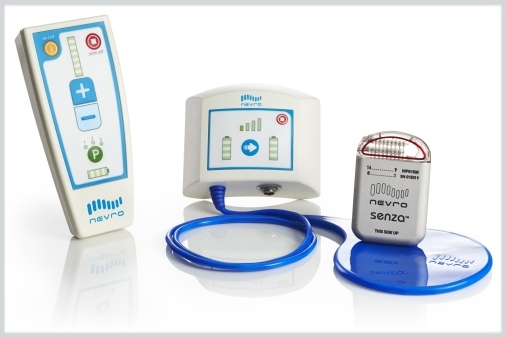Telemedicine is turning out to be a fantastic, innovative option to improve access to care, reduce the burden of disease, and improve patient outcomes. Individuals living with chronic pain are greatly benefiting from experts who are treating them from their living rooms. “It may not be for everybody, and I think patient choice should remain the center point of care, as telemedicine takes a larger sector of the market. I also think there needs to be careful deliberation at all levels, to improve access to telemedicine for all, and to ensure that time spent in telemedicine is adequately compensated,” said nephrologist Gaurav Jain, MD, associate professor at the University of Alabama, in Birmingham, Alabama, who has been practicing telemedicine for about 3 years.
Patients living with chronic pain anywhere in the country can now digitally connect with a physician for a diagnosis and behavioral health care plan. On January 12, 2022, Lin Health, a digital behavioral health platform catering to patients with chronic pain, announced that it had launched a telehealth technology platform that creates care plans tailored to addressing patient-specific triggers for pain.
The company is partnering with SteadyMD providers, who are specially trained to utilize the International Classification of Diseases- (ICD) 11 pain diagnosis protocol, which includes a new top-level diagnostic category (Primary Pain). This represents a new treatment paradigm by bringing science-informed, evidence-based, accessible, affordable, and effective treatment for chronic pain, according to clinical psychologist Abigail Hirsh, PhD, cofounder of Lin Health.
This new platform represents the first nationally available option for the diagnosis and treatment of primary pain. “ICD-11 finally recognizes chronic pain as a disease, not just a symptom. More importantly, the new codes reflect the medical consensus that the bio-psycho-social component of pain is essential to address,” said Dr Hirsh. “Initial estimates are that as high as 85% of chronic pain experiences have a Primary Pain component. However, the availability of providers in the United States who are directly diagnosing and treating Primary Pain is low.”
Once diagnosed, each user’s pain management program is specifically tailored to their condition and addresses anxiety, depression, stress, movement, pain education, sleep, diet, and other aspects of daily life affected by pain. Hirsch noted that pain specialists know a significant proportion of the pain experience is being driven by centralized factors. It is the brain’s learned pathways around pain that are perpetuating the pain experience, not structural or tissue concerns. “Pain specialists reach out to us so relieved that there is finally somewhere to refer patients who need help for this component to their pain,” said Dr Hirsch. “Far too many pain patients find that getting to and from appointments becomes a full-time job.”
Research suggests that behavioral health protocols for primary pain may be highly beneficial. A recent study published in the Journal of the American Medical Association (JAMA) found that pain reprocessing therapy is 6-times more effective than treatment as usual, and resulted in nearly 3 out of 4 trial participants receiving this therapy reporting they were pain free or nearly pain free.1
In this randomized clinical trial, 33 of 50 participants (66%) randomly assigned to 4 weeks of pain reprocessing therapy reported being pain-free or nearly pain-free at posttreatment, compared with 10 of 51 participants (20%) randomly assigned to placebo and 5 of 50 participants (10%) assigned to usual care. These gains were largely maintained through 12 months of follow-up.1 Study investigator and clinical psychologist Yoni Ashar said his team demonstrated for the first time that a psychological treatment can eliminate primary chronic back pain in a majority of patients. “This finding is significant because adequate treatments for chronic back pain are lacking, and the prevalence of this condition is increasing, along with risky pain coping strategies like opioid misuse,” Dr Ashar stated.
The study demonstrated that a set of psychological/behavioral techniques (pain reprocessing therapy) can reverse brain changes and eliminate or nearly eliminate pain. “Strengths of the study include a reasonably sized sample (N=151), relatively broad inclusion criteria, the inclusion of functional brain imaging (functional magnetic resonance imaging), blinded assessments, and stratified randomization,” said Dr Ashar. “Weaknesses are that the sample was relatively well-educated, physically active, and 89% White, and that the study clinicians were experts in the treatment model.”
Telehealth is an excellent tool for delivering psychological and behavioral interventions. Shaheen Lakhan, MD, PhD, is board-certified in neurology and pain medicine and has been practicing telehealth for 10 years for full service inpatient and outpatient care, as well as chronic care management. He noted that 1 of the main advantages of telehealth is its accessibility. “Since chronic pain syndrome ends up being a common final pathway for a variety of etiological pain events, it affords us access to standardized, evidence-based, multi-disciplinary integrative pain care methods that are typically only available to 1-2% of chronic pain patients,” said Dr Lakhan.
Karl Kochendorfer, MD, an associate professor of clinical family and community medicine at the University of Illinois Hospital & Health Sciences System in Chicago, Illinois, said telemedicine can be highly beneficial for patients living with chronic conditions, such as pain and diabetes. “Overall, I love it and I hope it doesn’t go away. There are pros and cons, but it allows more flexibility for the patients. I have some very vulnerable patients and this gives them a chance to connect,” said Dr Kochendorfer. “With diabetes, they still need to come in for labs, but I think it can be very helpful. With chronic pain, it is a challenge to manage, but it can be managed over telehealth.”
During the pandemic, there has been a rise in the use of virtual appointments for patients seeking health care. A new study by Tufts University researchers, however, suggests telehealth appointments may be most effective when they augment in-person health care visits rather than fully replace them for many patients of more advanced age with chronic illnesses.2
The study, which focused on older patients with serious and chronic kidney disease, found that not all patients were satisfied with telehealth. People of color, including patients who identified as Black, Native American, or Hispanic, or those who required additional accessibility features such as interpreters, were largely dissatisfied with telehealth.2
Keren Ladin, an associate professor of occupational therapy and community health at Tufts University in Boston, Massachusetts, was primary investigator of this study and was surprised by the findings. Black patients also reported that telehealth appointments prevented them from connecting meaningfully with their doctors, contributing to feelings of mistrust.
For clinicians, the low regard for telehealth appointments was more pronounced. A majority of the physicians interviewed remotely from Boston, Chicago, Portland (Maine), and San Diego equated telehealth with lower-quality care. They reported difficulty naturally building and maintaining a personal rapport with patients with chronic diseases. Patients, too, were worried about this.
Many telehealth services will remain covered by Medicare through 2023, under current law. Dr Jain said telemedicine has significantly helped many of his patients who otherwise may have gone untreated. “I love the ability to improve access, and save time for patients. For many patients who are older, or have difficulty with transportation, telemedicine provides an avenue for access to a physician,” Dr Jain stated.
However, he said there are some disadvantages, as virtual medicine is not ideal when patients are faced with a difficult diagnosis. Being in the room with the patient and providing reassurance is an important human connection that is lost with telemedicine. “I can clearly state that it takes me more time to conduct a telemedicine patient visit, than an in person patient visit. The technology, follow up, and the work before and after the visit clearly increase for the physician, and this is not being considered in many of the payment models. This often leads to physician disengagement,” Dr Jain concluded.
References
1. Ashar YK, Gordon A, Schubiner H, et al. Effect of pain reprocessing therapy vs placebo and usual care for patients with chronic back pain: a randomized clinical trial. JAMA Psychiatry. 2022;79(1):13-23. doi:10.1001/jamapsychiatry.2021.2669
2. Ladin K, Porteny T, Perugini JM, et al. Perceptions of telehealth vs in-person visits among older adults with advanced kidney disease, care partners, and clinicians. JAMA Netw Open. 2021;4(12):e2137193. doi:10.1001/jamanetworkopen.2021.37193






